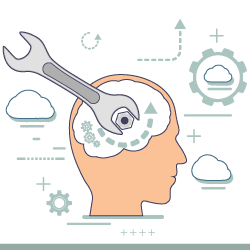Journey of invention

Prof. Dr. Suham Al-Essa
Creativity
11

Have you ever dreamed of being an inventor? Was this idea fleeting and faded away with the hustle and bustle of days, or did you stop and wonder why I can't achieve this dream? What makes it impossible? Is there anything impossible with the weapon of knowledge, hard work and perseverance?
There are two schools, although their methodology differs, but they achieve the same goal; the first adopts the theory that the inventor must possess knowledge, intuition, and sound scientific methodology from the beginning, and one of its pioneers is Henri Poincaré, one of the mathematical geniuses of the twentieth century, and one of his famous sayings: Intuition in the scientist is the basis of discovery.. The second school links inventions to the needs of society, so that society provides the inventor with the appropriate incentives and values for the invention.
But is genius alone enough to be an inventor?
Genius gives you inspiration, ideas, solutions, but it is not enough without hard work and making it a reality. Genius may become just a mirage, a fantasy, and an idea that scatters and fades away with the days for another idea to shine. True genius is 1 percent inspiration and 99 percent hard work and real ambition to achieve the goal.
Coincidence sometimes plays an important role in inventions, but for those who deserve it; many coincidences have passed without being used. The discovery of penicillin, the microwave oven, X-rays, crispy potatoes, etc., all happened by chance, but inspiration and ambition helped to reveal them to the world. Between 30 and 50 percent of scientific discoveries happen by mistake or coincidence.
Your steps as an inventor start from your inspiration with the emergence of the idea and your definition of it, then you move to the second stage, which is the real question that you should ask yourself: How will I achieve my dream? Will I continue the journey of imagination and receive the creativity award within the morning and evening dreams shows, or will I turn it into a real reality that begins as a second step with extensive reading about everything related to the topic?
The third step is to develop solutions to the problem at hand. This stage is characterized by hard work, seizing opportunities, and patience. Failure of an experiment may be frustrating for many, but the truth is that it is the gateway to success for new ideas and solutions. Thomas Edison is the role model in this field. In the final and last stage, evaluate the problem and the solution, then generalize and crown your dream on the ground.
But do you think that invention must have a need? As they say, "necessity is the mother of invention"?
No, it is not necessary. There are some inventions, and they are many. For example, the invention of the Reeding-Wip can for whipped cream, which became an icon of consumption. Its inventor is Aaron Lane (1924-1999 AD). His picture was not placed in the death record, but rather the picture of the red and white trademark for the whipped cream can.
The journey of invention begins from within you, a small initiative that grows and you are the one who decides whether it will continue and see the reality on the ground or remain a dream whose ambition is limited by procrastination and inability?
You are the one who makes the change. Look around you at the models of our inventor sons that we are proud of. Do not dream or compare, but decide to be one of them.
Did you benefit from the information provided on this page?
visitors liked this page



